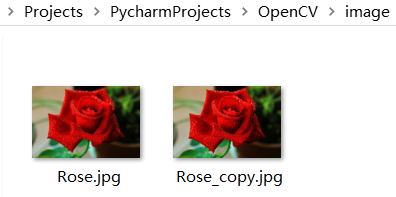OpenCV (Open Source Computer Vision Library) is an open source computer vision library, provides many functions, computer vision algorithms can be efficiently implemented, for example covered both from the most basic to advanced object detection filter. OpenCV using C / C ++ development, but also provides an interface to other languages Python, Java, MATLAB, etc. OpenCV is cross-platform, it can run on Windows, Linux, Mac OS, Android, iOS and other operating systems. At present its broad range of applications, including image stitching, image noise reduction, product quality control, human-computer interaction, face recognition, motion recognition, motion tracking, and other unmanned. Meanwhile, OpenCV also provide machine learning module, you can use normal Bayes, K nearest neighbors, support vector machines, decision trees, random forest, artificial neural networks, machine learning algorithms.
A scanned image
函数:cv2.imread(filename, flags=None)
Parameters :
filename : picture address
the flags : read mode, '0' indicates the read grayscale image (color image into a grayscale image), ' 1' is represented as a color image (default) read
Example :
# Import packages Import CV2 Import numpy NP AS # read image IMG = cv2.imread ( ' ./image/Rose.jpg ' ) # image size Print (np.shape (IMG)) # image essence matrix Print (IMG)
The results :
(597, 900, 3) [[[ 93 144 170] [ 93 144 170] [ 93 144 170] ... [ 38 109 59] [ 36 107 57] [ 35 106 56]] [[ 93 144 170] [ 93 144 170] [ 93 144 170] ... [ 37 109 57] [ 36 107 57] [ 35 107 55]] [[ 93 144 170] [ 93 144 170] [ 93 144 170] ... [ 39 109 56] [ 38 107 56] [ 37 107 54]] ... [[115 133 120] [118 136 123] [122 140 127] ... [ 3 9 16] [ 3 9 16] [ 4 10 17]] [[112 130 117] [115 133 120] [119 137 124] ... [ 3 9 16] [ 3 9 16] [ 3 9 16]] [[110 128 115] [113 131 118] [118 136 123] ... [ 2 8 15] [ 3 9 16] [ 3 9 16]]]
Note : Python OpenCV reads the RGB image stored in the matrix, color channel order is B, G, R
Second, the display image
Function : cv2.imshow (winname, mat)
Parameters :
winName : display window
MAT : image matrix
Example :
Import CV2 Import numpy NP AS # read image IMG = cv2.imread ( ' ./image/Rose.jpg ' ) # Create Window cv2.namedWindow ( ' Image ' ) # display image in the window cv2.imshow ( ' Image ' , img) # settings window remains cv2.waitKey (0) # final release window cv2.destroyAllWindows ()
The results :

Third, the copy image
Function : .copy ()
Example :
Import CV2 # read image IMG = cv2.imread ( ' ./image/Rose.jpg ' ) # copy image img_copy = img.copy ()
Fourth, save the image
函数:cv2.imwrite(filename, img, params=None)
Parameters :
filename : Save the image address
img : image matrix
params :
Example :
Import CV2 # read image IMG = cv2.imread ( ' ./image/Rose.jpg ' ) # copy image img_copy = img.copy () # save the image cv2.imwrite ( ' ./image/Rose_copy.jpg ' , img_copy )
The results :
